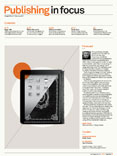Pulp revival
Thin, flimsy newsprint paper is making a comeback – a big favourite with students and established designers alike. Emily Pacey surveys the scene of publications that are making the most of newsprint’s ecological and economic potential
Over the past decade or so, print newspaper sales and advertising have flagged in the face of online competition. In response, many papers have downsized their formats or slashed their paginations. But newsprint – the thin, throwaway paper that holds our chips and keeps us company on the bus – is going through a renaissance.
’People are fed up with reading things in dull PDF format – they want something more fun,’ says Plan B Studio’s Steve Price. ’Newsprint has a lot of character, plus it’s a very familiar format,’ he adds by way of explaining its appeal. At the end of last year, Price made the unusual move of designing an annual report (for the London Community Resource Network) as a newspaper. He also publishes his paper Project 10 through The Newspaper Club.
By night, newspaper presses like east London’s Westferry rattle out millions of copies of our daily papers, but during the day, presses tend to fall silent. About a year ago, a small start-up company called The Newspaper Group decided it could exploit these hours of downtime, and cast itself as the middle man between printers and small groups or individuals looking to print their own short-run papers and other newsprint products. Striking a deal with the printers to guarantee rock-bottom prices, The Newspaper Group opened the floodgates for our keen taste for newsprint, and last year won a Brit Insurance Designs of the Year award. Price says, ’Before, you would not find a newspaper printer that would do short runs. Also the paper is so light, at about 50gsm, that it is a rare and brave mainstream printer that dares to use it’.
Newsprint’s new accessibility is making it very popular among design students, who have started a trend for printing their theses as newspapers. ’The students really enjoy the novelty value of presenting their work as a newspaper, and it looks really smart to hand over,’ says The Newspaper Group’s Anne Ward.
We are all familiar with the famous dotty grain of comics and papers as depicted in Pop Art paintings from the 1960s, confirming that newsprint is not suited to every job. ’If you are wanting to produce high-quality imagery, then don’t choose newsprint, as the ink just soaks into the paper,’ say David Hitner of Studio Small.
Other small newsprint publications to have been born from the newspaper renaissance include Upstyler, which is blurring perceptions of what a newspaper is by calling itself a magazine. Its next issue on women at work is to be printed on salmon pink newspaper stock familiar as the Financial Times paper, but ultimately the magazine’s creators are hoping to find a thicker, paperback stock. ’We want to keep it as a newspaper because of the ecological credentials of using lightweight stock, but we also want the ink to stay on the stock better,’ says Upstyler co-founder Ben Lewin.
Last month, Studio Small created a newsprint invitation for fashion designer Margaret Howell’s latest event in Paris. To reflect her style, the consultancy decided to make the invitation’s black-and-white photographic imagery very grainy, ’which then seemed to suit a utilitarian, newsprint paper stock,’ says David Hitner of Studio Small, describing the consultancy’s creative decision-making process.
’There is definitely a move back to these types of papers, possibly reflecting society’s current need for a return to more honest materials, and for brands to look as though they aren’t paying a lot of money for paper,’ says Hitner.
Newman reports that commonly, people don’t want their newsprint publications trimmed, wanting to preserve the signature rough edge of a newspaper. ’I think people are very familiar with and fond of newsprint – they understand newspapers and they know what to do with them, and they are very easy to read. A lot of people like the feel and the smell of it’.
-
Post a comment




